CHARLOTTE, NC - The Charlotte Area Transit System (CATS) announced during the second week of January that its Blue Line light-rail extension will open March 16th.
Pre-revenue service testing will begin the week of January 21st. During testing, light-rail trains will stop at all stations and mimic passenger boarding with active crossing signals, Charlotte city officials tweeted on January 9th.
(The same testing method was used before Phase 2 of the Los Angeles Expo Line was opened in May 2016.) The 9.3-mile extension runs from the 7th Street Station in Charlotte's Center City area to the University of North Carolina at Charlotte campus.
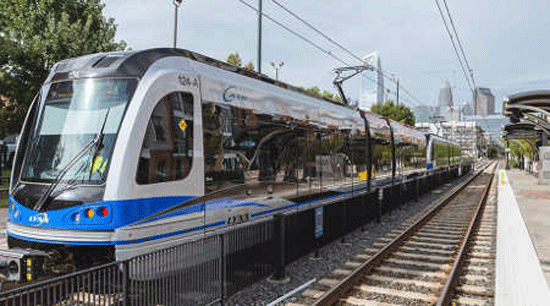
Two of Charlotte Area Transit System's (CATS) 38 Siemens S70 Vehicles.
Although the $1.1 billion project has been delayed, it remains under budget, CATS officials said on Twitter.
The extension originally was slated to open in August 2017, but the agency pushed the opening date to March due to construction coordination challenges and other issues.
In May 2017, CATS activated the line's overhead catenary system (OCS) to perform its first "live wire" test.
CHINA - On January 7th, CRRC Changchun Railway Vehicles Co unveiled a prototype of what it says is the world’s first carbon fibre metro car bodyshell, according to a report issued by Metro Report International. The manufacturer says that the composite materials used allow the car to be 35% lighter than the average metal body bodied metro car, which would help to reduce rail wear.
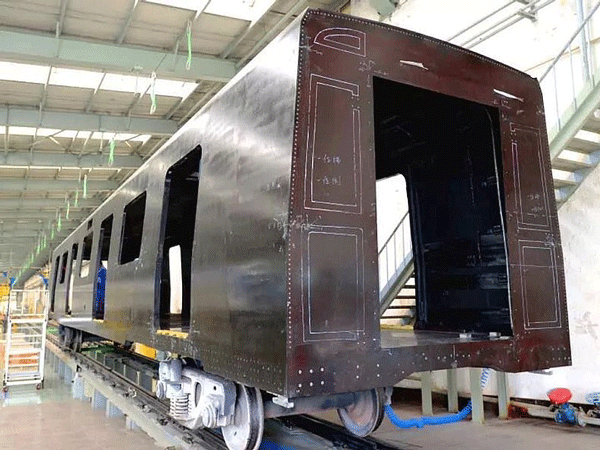
CRRC Prototype Composite Body Shell
CRRC says that it has the intellectual property rights to the design, but has not specified when it would begin mass production of carbon fibre bodyshells. [Ed: Personally we have been wondering what took composites so long to appear on rail body shells since aircraft manufacturers had embraced composites many years ago.]
LOS ANGELES, CA - By the end of last year, the Los Angeles County Metropolitan Transportation Authority (LA Metro) "nearly completed" mining twin tunnels for the Regional Connector light-rail project, agency officials announced in a blog post. The tunnels run from the city's Little Tokyo neighborhood to the financial district, according to the post summarizing progress on the project. Each tunnel measures about 5,700 feet in length and is made of 1,140 pre-cast concrete rings. The agency also has relocated major utilities along the 1.9-mile alignment. The Regional Connect project will connect the Blue, Expo and Gold light-rail lines via the twin tunnels below downtown Los Angeles. (Note: This connection in the original plan until hysteria spearheaded by a former politician prevented subway building for many years.) The route is expected to make light-rail trips to and through downtown faster with fewer transfers needed. In 2018, work will continue to build the Grand Avenue Arts/Bunker Hill Station, which is the project's deepest station. Crews will pour concrete to build the station's floors and walls.
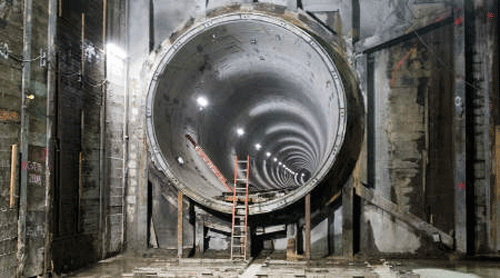
One of the twin tunnels that will connect and unite all of Los Angeles light rail lines for the first time!
Train service on the Norwalk to Redondo Beach Green Line stopped going further west than Hawthorne, starting January 26th, as Metro needs 2.5 months to reconfigure tracks to bring in connections to the new Crenshaw Line, the agency announced on January 21st. Switches will need to be installed on the Green Line tracks which were installed before the Crenshaw Line was envisioned or funded. When the Crenshaw Line opens in 2019, its trains will connect to the current Aviation/LAX station, as its southern terminus. Train service will be suspended from the last five stations -- Aviation/LAX, Mariposa, El Segundo, Douglas and Redondo Beach until April 7th. A free shuttle bus will link those stations to the Hawthorne/Lennox Station, where trains will continue serving stations from there east to Norwalk. The line opened in 1995 using the 15 NipponSharyo P2020 cars which were replaced by the Siemens P2000 cars. At the current time, some of the new P3010 cars have begun to operate on the Green Line.
ORANGE COUNTY, CA - Streetcar line construction in Orange County, south of Los Angeles, is expected to begin this year from Santa Ana to Garden Grove, according to an Orange County Register website report on January 12th. Building the $299.3 million, 4.1 mile modern streetcar line partially over abandoned Pacific Electric "Red Car" right of way will last two years. Eight streetcars are slated for the fleet, including six for peak period travel. Orange County Transportation Authority will seek bids in February from streetcar manufacturers.
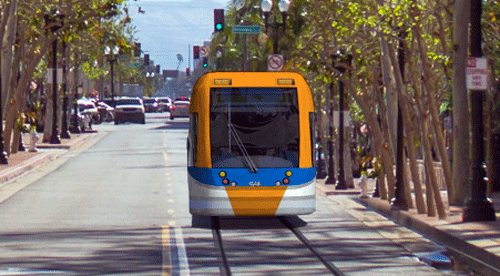
Orange County Streetcar Concept!
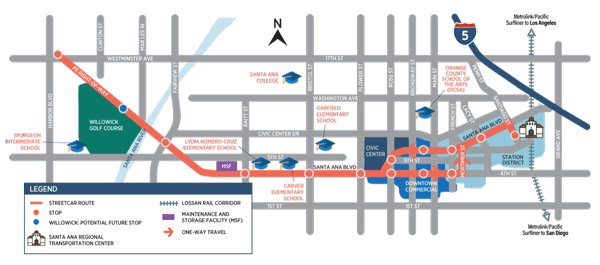
Projected Route of the Orange County Streetcar!
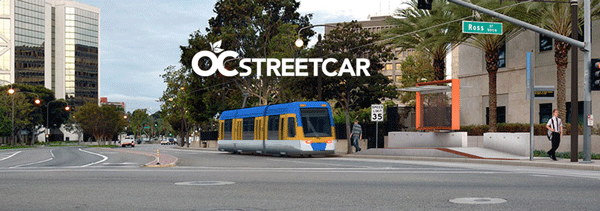
Concept Streetcar at Ross St!
PHILADELPHIA, PA - Philadelphia broadcast outlet KYW reported on January 12th that a newsstand and bookstore at the Southeastern Pennsylvania Transportation Authority (SEPTA) Suburban Station just west of City Hall in Center City closed their doors in December 2017. However, SEPTA officials say the space will be rented, despite the action of the New Jersey based news sales operator to close its outlets. However, whatever is leased will not be to a newspaper or magazine operator so SEPTA riders will have to buy train reading material elsewhere. The building retains its historic 1930's facade.
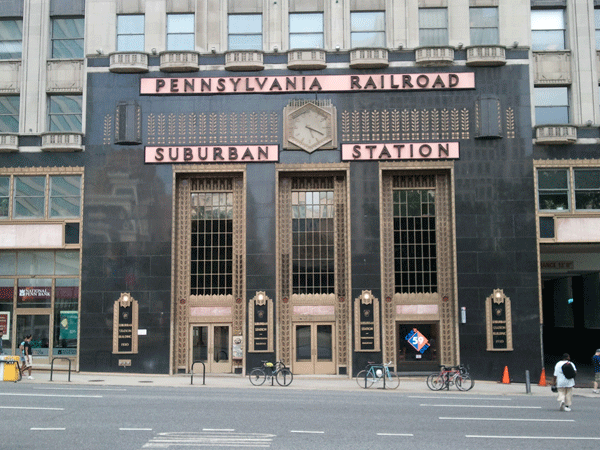
Philadelphia's SEPTA, formerly Pennsylvania RR, Station at 30th & Market Streets.
REDLANDS - SAN BERNARDINO, CA - The San Bernardino County Transportation Authority (OmniTrans) has issued Stadler with a notice to proceed with the design and supply of three Flirt diesel multiple-units (DMU) for the Arrow commuter service which is to be launched in 2021 under the Redlands Passenger Rail Project.
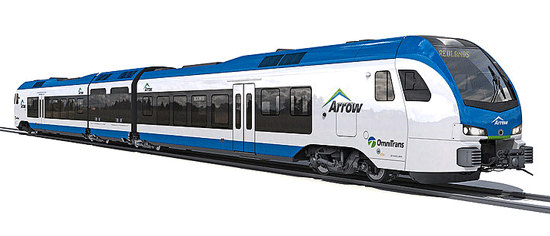
The services will use 14 km of former AT&SF line owned by San Bernardino Associated Governments, running from the University of Redlands via three intermediate stations to the San Bernardino Transit Center where they will connect with Metrorail services to and from Los Angeles. The DMU order is worth $31.4 million, and there are options for three more units. The 48.5 meter long DMUs will have two passenger sections with a total capacity of 116 seated and 118 standing passengers, and a central module housing the EPA Tier 4 Final compliant diesel traction equipment. The DMUs will be equipped with PTC, and will comply with the Federal Railroad Administration’s Alternative Vehicle Technology requirements for mixed operation with freight trains. Arrow services will operate at speeds up to 70 km/h, although the design would be capable of a service speed of 160 km/h. OmniTrans has requested a ‘scalable’ design, with the option to add an additional passenger car and to convert from diesel to ‘zero-emission propulsion technologies as they become appropriately suited for the service’. Stadler said the order announced on January 18th was its eighth in the USA. The DMUs are to be manufactured at Stadler’s new plant in Salt Lake City, meeting federal Buy America requirements.
SAN FRANCISCO (BAY AREA), CA - The first of 775 new cars went into service on the Bay Area Rapid Transit System (BART) on January 19th. They are called the "Fleet of the Future" and the cars will alleviate crowding and provide a cooler and quieter ride for the patrons.
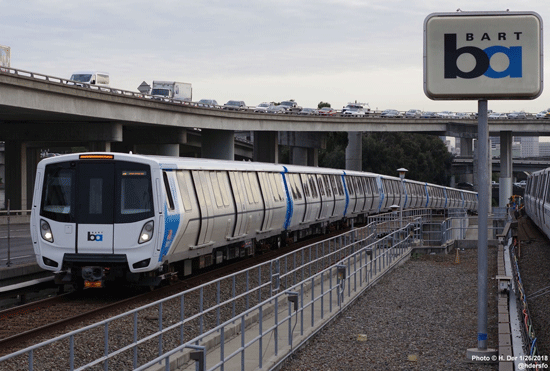
New Bombardier-built BART Car!
With an average fleet of over 30 year old, BART is running the oldest fleet of cars in service in any large city in the United States. the current fleet of 669 cars is shown in the next chart.
Model |
Supplier |
Number of cars |
year placed in service |
Typical Life Span |
Year of mid-life rehab |
Projected end of useful life |
A2/B2 |
Rohr |
439 |
1972 |
25-30 |
1997-2002 |
2012-2017 |
C1 |
Alstom |
150 |
1988 |
25-30 |
None |
2013 |
C2 |
Morrison-Knudsen |
80 |
1994 |
25-30 |
None |
2019 |
Bombardier delivered. 10 pilot cars in 2016 for initial shakedown and testing. Federal requirements, "Buy America" require that 60% of the total cost of all components be made in the USA. Deliveries will continue until 2022.
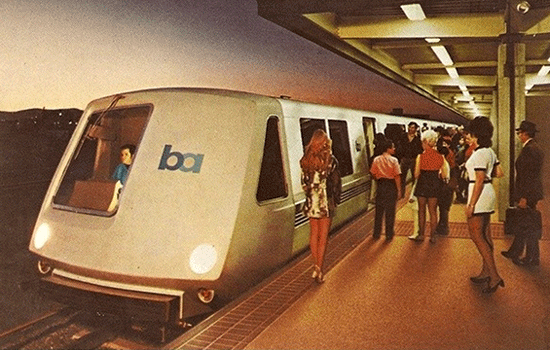
Original Rohr-built BART A1 car!
SANTA BARBARA - VENTURA, CA - The mudslides in Montecito, CA which killed at least 20 people have closed Highway 101. The only way to get to Santa Barbara from Los Angeles by car or bus was to use a detour via Interstate 5, California 126 to Santa Maria and then south on Highway 101, a four-hour trip. Meanwhile many Southern Californians discovered Amtrak since the tracks were cleared by January 11th.
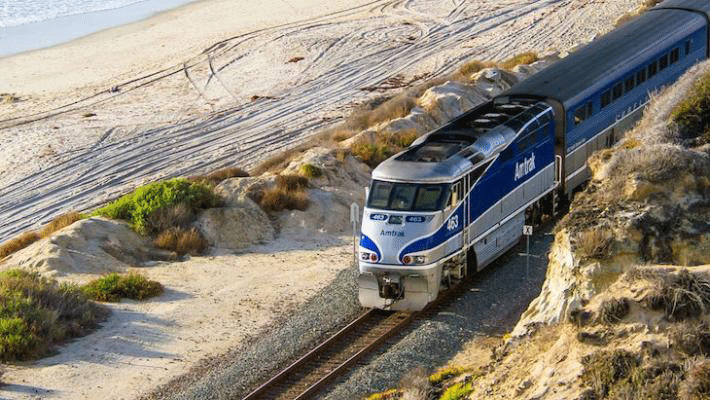
On January 12th, The Pacific Surfliner, operated by Amtrak reported that "...trains were experiencing very heavy passenger loads on trains traveling through the areas affected by the recent mudslides. We're adding additional cars to trains where possible to increase capacity and will continue to do so through the weekend as relief efforts continue. Eight additional cars and three locomotives from Northern California were added so that another 270 seats per train could be added. Highway 101 in Montecito was not able to be cleared and reopened to traffic until January 22nd.
TACOMA, WA - According to the NTSB, the engineer on the fatal December 18th crash missed the sign shown below that indicated a 30 mile per hour speed restriction:
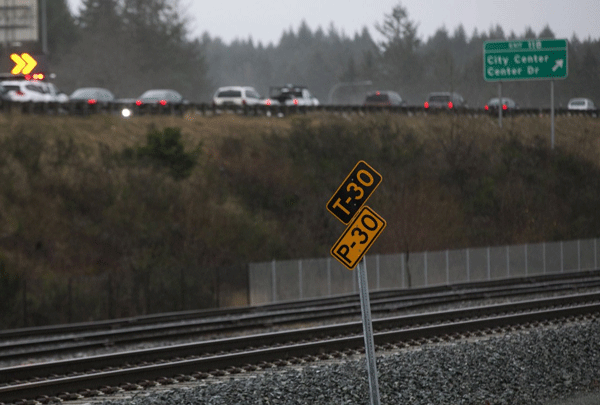
The train was going about 80 miles per hour when it derailed on curve where the speed limit was 30 mph. It crashed onto Interstate 5, closing the southbound freeway lanes for most of three days, causing traffic havoc in the region. The train was on its inaugural run, carrying 83 passengers. Three passengers were killed and 62 injured. The 55 year old engineer could not be interviewed until mid-January due to the seriousness of their injuries. The engineer had undergone only one southbound training trip prior to this run. He had been hired by Amtrak in 2004 as a conductor and was promoted to engineer in 2013.